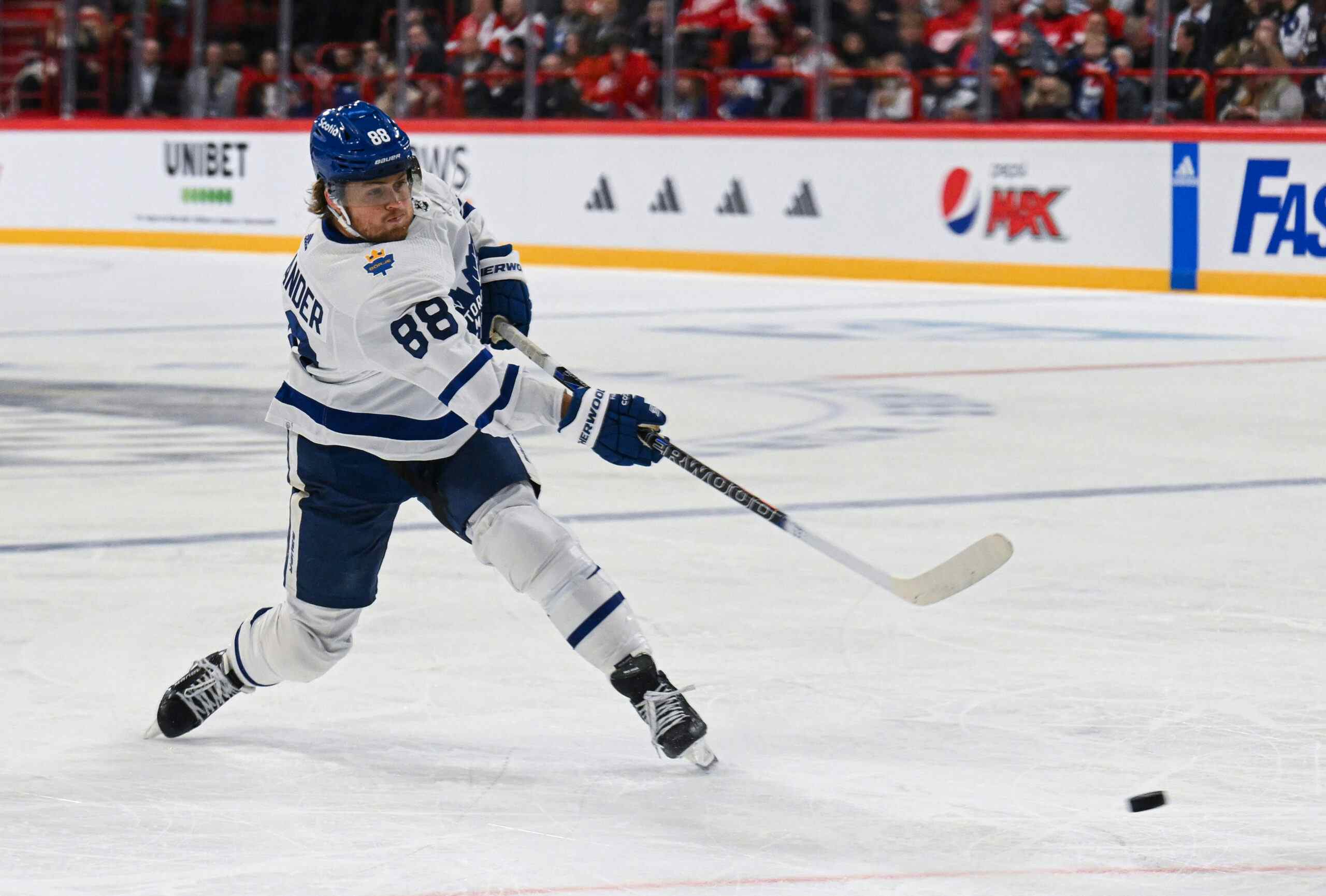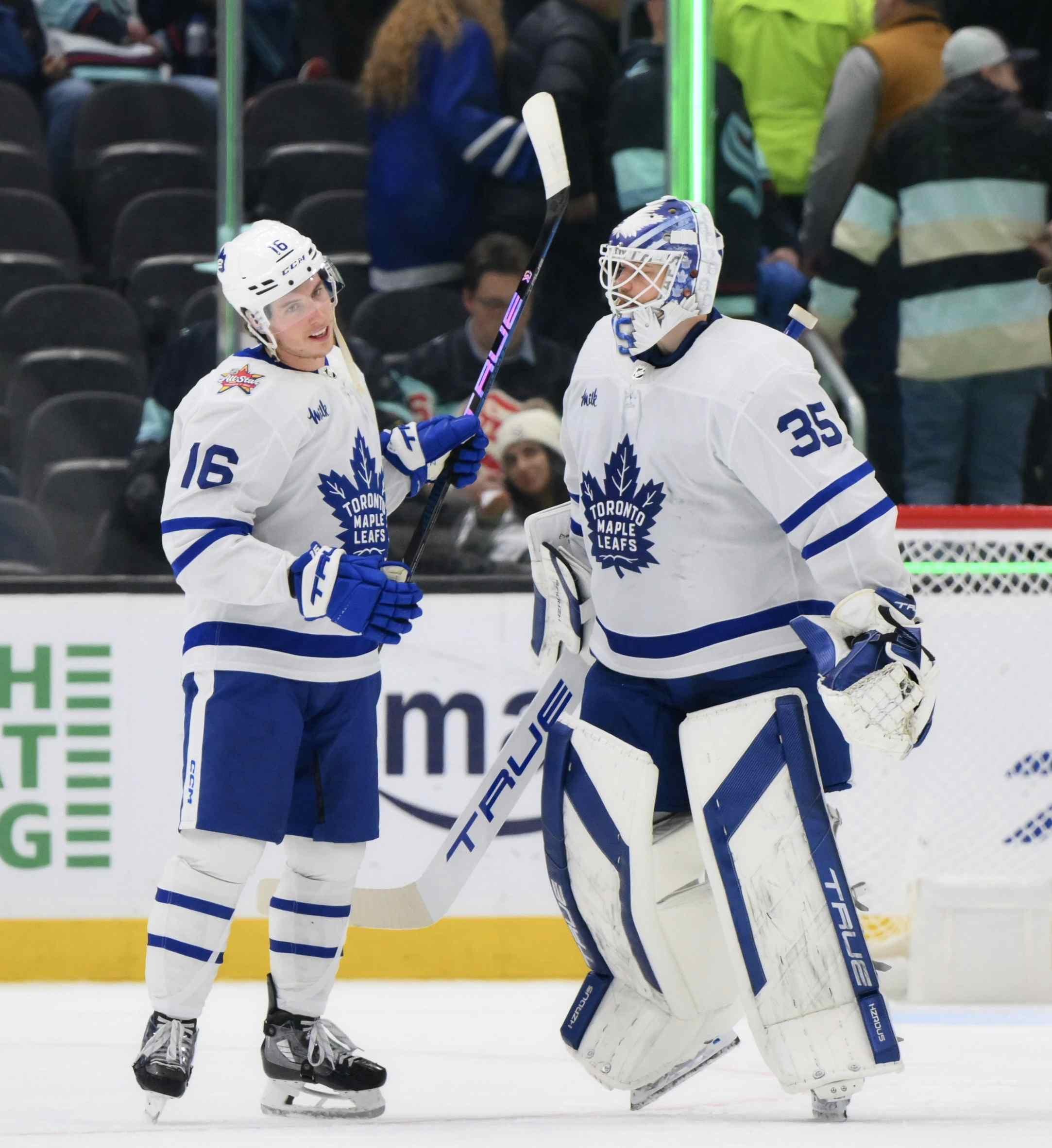Why the Maple Leafs should let Morgan Rielly work through his shorthanded struggles

Photo Credit: Winslow Townson/USA TODAY Sports
Toronto Maple Leafs defenseman Morgan Rielly has always appeared cool, calm and collected when he’s handling the puck. The skilled 21-year-old hasn’t hit 30 points in a full season yet in his career, but that will come. His plus skating ability and high end offensive awareness is plain to see, and in the offensive end of the rink he’s already a top-of-the-roster quality blue-line piece.
In past seasons where Rielly has been less effective – and feel free to stop me if you’ve heard this one about an NHL defenseman in their very early 20s before – is on the defensive side of the puck. While that would appear to be changing rapidly at even-strength, the Maple Leafs have thrust Rielly into a key role when they’re down a man and the early results have been far from pretty.
Even so, the Maple Leafs should give Rielly the rope he needs to work through his early season issues in shorthanded situations.
Even Stronger at Even Strength
Though Rielly is a quality puck mover, and profiles like the sort of defenseman the shot-based metrics usually favour, he’s generally had a permissive defensive impact in his first two seasons.
Among the 164 defensemen who’ve logged at least 1500 minutes at 5-on-5 since Rielly entered the league, the young blue liner is in the bottom fifth of that group in terms of permitting opponents to generate unblocked shot attempts at a higher rate relative to his teammates. Considering both the poor quality of the blue-line personnel whom Rielly has shared a roster with during his Maple Leafs tenure and his relatively prescribed usage, that his defensive results have stood out as problematic speaks to the extent of the issue.
It’s not uncommon for young defenders in the NHL to struggle to figure out the finer points of shutting down the best offensive hockey players in the world, but you do want to see a player improve in this area as they mature. And in Rielly’s case that’s what’s occurred.
We don’t even have to look at just his small sample results so far in the 2015-16 campaign either. Rielly showed demonstrable improvement in the area of unblocked shot attempt suppression throughout last season, particularly following the shift from Randy Carlyle to Peter Horachek behind the bench:

(Courtesy: War-on_ice)
Obviously that improvement has continued sharply in the early going, as you can see at the right end of the above graph.
Part of what’s going on here is that the Maple Leafs’ overall underlying performance has improved as the club has shifted head coaches from Carlyle to Horachek to Mike Babcock. In the early going though, Rielly’s defensive results – long worse than every Maple Leafs defender except for Dion Phaneuf, who was massively overused during the Carlyle’s tenure – are standing out relative to his teammates too. Only Martin Marincin and Jake Gardiner have been better at limiting unblocked attempts against among Maple Leafs defenders through the first three weeks. That’s uncharted and wholly positive territory for Rielly, but can it last?
We can’t really answer that question yet. It’s surely a promising sign that Rielly has shown solid chemistry with with all of Matt Hunwick, Scott Harrington and Martin Marincin in short stints at 5-on-5, but his positive defensive impact shows through more clearly by unblocked shot attempt differential (Fenwick) than it does when you look at raw shot attempt data (Corsi).
Generally speaking I prefer to use unblocked shot attempt differential when evaluating defensemen because it doesn’t punish defensive players for shot blocks, which have no chance of resulting in goals against anyway. Early in the season though, I prefer raw shot attempt differential because it gives us more data to work with as the sample expands…
While we’ll have to wait to see whether or not Rielly’s strong defensive results continue, one thing we can be confident about is that Babcock is going to continue to push his bluechip 21-year-old blue liner to improve his defensive game. This season that’s meant playing in a matchup role on occasion and it’s meant a steady, steady diet of penalty killing minutes (Rielly is second among Toronto defenders in shorthanded ice time per game).
The shorthanded experiment
It’s plain to see that the Maple Leafs are in the experimentation phase of the Mike Babcock era.
For several young players, like Rielly and Nazem Kadri, the new Maple Leafs bench boss seems intent on challenging them to step up and do things they’ve never done before. Going forward, one assumes, Babcock has to figure out precisely what he has.
For Kadri that’s meant handling first-line minutes at evens, getting his shot off more and holding down a spot on the first unit power play. The early returns have been auspicious. For Rielly that’s meant stepping up in a major way in shorthanded situations.
“He can play on the power play for sure for us and maybe he will,” Babcock told Jonas Siegel of TSN.ca of challenging Rielly to focus on the defensive side of his game. “But we think the best thing for him and for us is to get him to be the best he can be defensively and then the offence will take care of itself. And part of that is killing penalties with Hunwick.”
For Rielly the early returns on the penalty kill have been, well, not very good. Concerning is probably too strong a word to describe Rielly’s performance down a man so far this season, but uninspiring is not.
On Saturday, for example, the Maple Leafs allowed two power-play goals against the Montreal Canadiens and Rielly was on the ice for both goals.
Interestingly, he was on the ice with different partners for the goals against as P.K. Subban’s 5-on-4 marker came when Rielly was paired with Marincin, while Brendan Gallagher tipped in a goal when Rielly was reunited with Hunwick. Instead of being glued to Hunwick at 4-on-5, Babcock bumped Rielly between the first and the second penalty-killing units.
If I had to guess, I’d suggest that Babcock was trying to protect Rielly a bit. After all Rielly’s 4-on-5 results have been pretty bad, frankly.
It’s not all on Rielly. The Maple Leafs have been poor in shorthanded situations as a team and are currently sporting a brutal 75 percent kill rate. Only five teams are surrendering 4-on-5 goals at a higher rate than the Maple Leafs have so far and they’re also in the bottom-10 among NHL teams in preventing shot attempts against, according to data found at hockeyanalysis.com.
Rielly hasn’t been the problem or anything, but he really hasn’t been a part of the solution so far either. Of the 33 NHL defenseman who’ve logged at least 20 minutes in 4-on-5 situations so far, only eight have been on the ice for more than a shot against per minute. Rielly is squarely in that group.
Among that same group of 33 defensemen, only Hunwick and Willie Mitchell – who is really old at this point, but also kind of the man – have been on the ice for goals against at a higher rate than Rielly has.
Finally if we look at shot attempts against, which is the metric that I’d favour because the season is brand new and it gives us the largest possible sample to work with, no defender whom has been used as regularly as Rielly has in shorthanded situations this season has been nearly as permissive relative to his team.
Play through the pain
It’s true that the Maple Leafs are a bad penalty killing team so far this season, and it’s also true that they’ve been at their worst when Rielly has been on the ice shorthanded. And yet: I’m not convinced they should change a thing.
Rielly’s defensive results at 5-on-5 were terrible for a couple of years before he began to figure it out towards the tail end of last season. And this season, to both my eyes and by the numbers, he’s been legitimately steady without the puck at evens. Sometimes you have to do to learn, even if the trial and error process yields a large handful of miscues.
Admittedly I have no expertise when it comes to developing elite hockey players. On that front, I’ll defer to Babcock. In doing so, I’ll point out that despite Rielly’s 4-on-5 issues, the Maple Leafs’ head coach has stuck with his young defender so far. He mixed and matched Rielly’s defensive partners a bit on Saturday, but Rielly was still second among Toronto defensemen in short-handed ice time.
Hopefully it continues. Giving RIelly the space to make mistakes in shorthanded situations and figure it out seems like a worthwhile use of this Maple Leafs season. Especially since, based on his improvement at even-strength over the past eight months or so, the skilled young defender has demonstrated the ability to iron out his defensive issues over time.
Recent articles from Thomas Drance





